Transparency Crusader
(Sea) Food Security
The ocean can feed a billion people, but who needs fish most?
COVID-19 and Fisheries
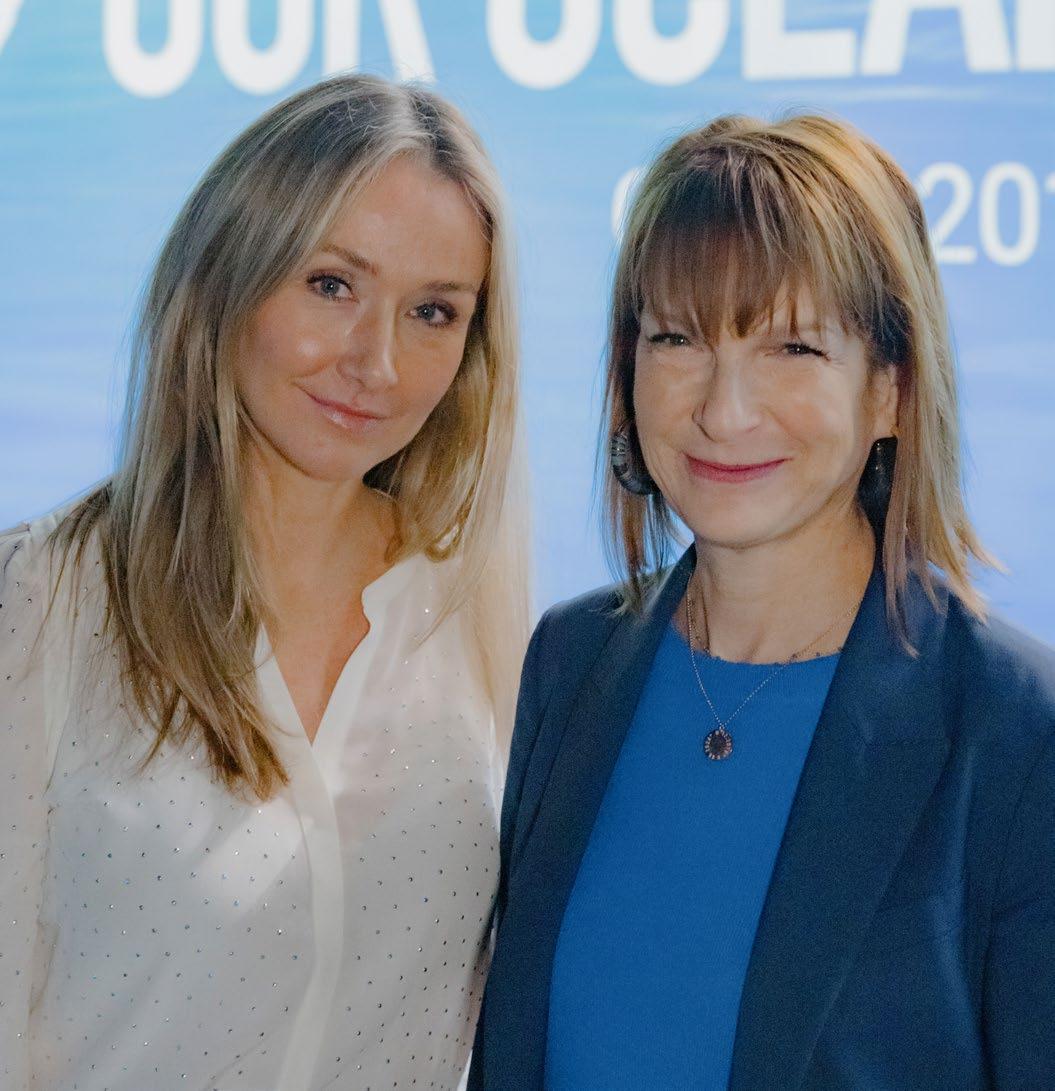
SUMMER 2020 OCEANA.ORG
Renata Terrazas, Oceana’s VP in Mexico, on publicizing vital data
Magazine
Dr. Daniel Pauly explains how fish stocks could recover post-pandemic
© Ilja C. Hendel
Oceana Senior Advisor Alexandra Cousteau and Bloomberg Philanthropies CEO Patti Harris are pictured at the Our Ocean 2019 conference in Oslo, Norway. For more, read the CEO Note on page 3.
Board of Directors
Valarie Van Cleave, Chair
Ted Danson, Vice Chair
Diana Thomson, Treasurer
James Sandler, Secretary
Keith Addis, President
Gaz Alazraki
Monique Bär
Herbert M. Bedolfe, III
Nicholas Davis
Sydney Davis
César Gaviria
Mária Eugenia Girón
Loic Gouzer
Jena King
Ben Koerner
Sara Lowell
Stephen P. McAllister
Kristian Parker, Ph.D.
Daniel Pauly, Ph.D.
David Rockefeller, Jr.
Susan Rockefeller
Simon Sidamon-Eristoff
Rashid Sumaila, Ph.D.
Sam Waterston
Jean Weiss
Editorial Staff
Editor
Emily Petsko
Designer
Alan Po
Ocean Council
Susan Rockefeller, Founder
Kelly Hallman, Vice Chair
Dede McMahon, Vice Chair
Anonymous
Samantha Bass
Violaine and John Bernbach Rick Burnes
Vin Cipolla
Barbara Cohn
Ann Colley
Edward Dolman
Kay and Frank Fernandez Carolyn and Chris Groobey J. Stephen and Angela Kilcullen
Ann Luskey
Mia M. Thompson
Peter Neumeier Carl and Janet Nolet
Ellie Phipps Price
Maria Jose Peréz Simón
David Rockefeller, Jr. Elias Sacal
Regina K. and John Scully
Sutton Stracke
Dr. David Treadway
Edgar and Sue Wachenheim III Valaree Wahler
David Max Williamson Raoul Witteveen Leslie Zemeckis
Oceana Staff
Andrew Sharpless Chief Executive Officer
Jim Simon President
Jacqueline Savitz Chief Policy Officer, North America
Katie Matthews, Ph.D. Chief Scientist
Matthew Littlejohn Senior Vice President, Strategic Initiatives
Janelle Chanona Vice President, Belize
Ademilson Zamboni, Ph.D. Vice President, Brazil
Joshua Laughren
Executive Director, Oceana Canada
Liesbeth van der Meer Vice President, Chile
Pascale Moehrle
Executive Director and Vice President, Europe
Renata Terrazas Vice President, Mexico
Patricia Majluf, Ph.D. Vice President, Peru
Gloria Estenzo Ramos, J.D. Vice President, Philippines
Susan Murray Deputy Vice President, U.S. Pacific
Beth Lowell Deputy Vice President, U.S. Campaigns
Nancy Golden Vice President, Global Development
Christopher Sharkey Chief Financial Officer
Kathy Whelpley
Chief of Staff, President’s Office
Michael Hirshfield, Ph.D. Senior Advisor
Oceana Magazine is published by Oceana Inc. For questions or comments about this publication, or to subscribe to Oceana Magazine, please call our membership department at +1.202.833.3900, email membership@oceana.org, or write Oceana, Member Services, 1025 Connecticut Ave. NW, Suite 200, Washington, DC 20036 USA.
Oceana’s Privacy Policy: Your right to privacy is important to Oceana, and we are committed to maintaining your trust. Personal information (such as name, address, phone number, email) includes data that you may have provided to us when making a donation or taking action as a Wavemaker on behalf of the oceans. This personal information is stored in a secure location. For our full privacy policy, please visit Oceana.org/privacy-policy.
Please Recycle.
FSC Logo


Features Contents To help navigate Oceana’s work, look for these five icons representing our five major campaigns. Curb Pollution Stop Overfishing Reduce Bycatch CEO Note Connecting the dots between environmental and public health is more pressing than ever For the Win Protections for sea turtles and whales, statewide plastic restrictions, and more News & Notes Seafood fraud uncovered in Mexico City, a fishing license revoked in the Philippines, and more Q&A Meet Renata Terrazas, Oceana’s new vice president in Mexico Small Scale, Large Impact Oceana works with artisanal and small-scale fishers to win victories Save the Oceans, Feed the World 2.0 Why it’s important to increase abundance in the countries most dependent on wild seafood Oceana’s Victories Looking back at our big wins over the last year Supporter Spotlight Oceana Science Advisor Dr. Boris Worm on restoring the world’s oceans by 2050 Ask Dr. Pauly How is COVID-19 affecting fisheries? Chef’s Corner Mark Bittman’s recipe for a kelp-infused udon noodle and miso soup Parting Shot Looking back at a market in Barcelona, pre-pandemic 3/ 4/ 6/ 10/ 8/ 18/ Protect Habitat Increase Transparency 26/ 27/ 28/ 30/ 32/ Oceana and artisanal fishers 10 Save the Oceans, Feed the World 2.0 18 © Oceana/Jenn Hueting © Shutterstock/Christian Vinces 1
Your support makes an ocean of difference

Please Give Generously Today
A healthy, fully restored ocean could sustainably feed more than 1 billion people each day.
Call us today at (202) 833-3900, email us at info@oceana.org, visit www.oceana.org/give, or use the envelope provided in this magazine to make a donation. Oceana is a tax-exempt 501(c)3 organization and contributions are taxdeductible to the fullest extent of the law.

© Shutterstock/SamanWeeratunga
If restoring abundant oceans helps protect public health, the COVID-19 pandemic prompts us to remember that. So does the pairing this month on our cover of Patti Harris, CEO of Bloomberg Philanthropies, and Alexandra Cousteau, Oceana’s senior advisor, photographed together at an ocean conference hosted last year by the Norwegian government in Oslo. Among Michael Bloomberg’s philanthropic interests, public health ranks high. Indeed, his achievements in that sphere are recognized in the name of the School of Public Health at Johns Hopkins University.
Eat more fish and less red meat, and medical studies predict your risk of obesity, heart disease, and cancer is significantly reduced. Some research even shows that steady consumption of omega-3 laden foods correlates with improved cognitive and mental health. Pregnant mothers need micronutrients like iron, zinc, and vitamin A, or their babies can suffer lasting developmental consequences.

Ocean fisheries are ready sources of these micronutrients, but more than 600 million people in coastal communities are at risk of nutritional deficiencies. Rebuilding abundant coastal fisheries and getting these fish onto the plates of local people would help provide affordable and sustainable healthy diets to vulnerable populations.
Another connection between Oceana and public health occurs in Chile. Oceana’s campaigners, helped by the generosity of Bloomberg Philanthropies, have been winning regulations limiting the use of antibiotics in commercial salmon farming. One of the reasons this battle matters is that these salmon farming companies could be creating drug-resistant bacteria that will become the next pandemic. And it’s not because the fish don’t wear masks and cough into their elbows. Salmon farmers grow their fish in sea pens. A pen in Chile, the source of 16% of farmed salmon sold in the United States, can contain up to 140,000 fish. It’s crowded in there. The fish swim in densely packed circles for the year and a half it takes them to grow to market size.
In 2016, 316 metric tons of florfenicol were used in salmon farming in Chile. And it was not an exceptional year. The average annual use of florfenicol in Chile in the last five years is 353 tons. In fact, florfenicol comprised 80% of ALL antibiotic usage in Chilean salmon farms between 2014 and 2018. Florfenicol is an antibiotic related to linezolid. Linezolid was approved by the FDA in 2000 and is frequently prescribed to treat serious hospital-acquired infections caused by multi-resistant bacteria including methicillin-resistant Staphylococcus aureus (known more familiarly by its acronym, MRSA).
The World Health Organization predicts that without stronger global measures to stop antibiotic overuse, the leading cause of death in 2050 will be antibioticresistant disease. In Norway, a country that farms about the same amount of salmon as Chile, 136 kilograms were used. That’s right, kilograms. To understand this difference, remember that a metric ton is 1,000 kilograms. Chilean salmon farmers build their
pens in the ocean, often in fjords where the natural tides are strong and carry the contaminated water into the wider sea. That means that all the naturally occurring bacteria in the pens’ saltwater is prompted to develop antibiotic resistance. At least a terrestrial livestock feedlot has fences. The industrial salmon farmers’ ocean nets are, by intention, entirely permeable to the open ocean.
The farmed salmon that you find in American stores carries a wide range of brand names. But some of the primary producers – Marine Harvest and Cermaq for example – operate in both Chile and Norway. What drives the difference between Chile and Norway? One key difference is that in Norway sensible public health regulators forbid the industry from abusing these lifesaving drugs.


Salmon is a staple in the Western seafood diet. After shrimp, it’s the most common seafood people eat in the U.S., and its share of the market is growing fast. But the difference between wild salmon – caught by fishers following scientific quotas that protect the resource for the long term – and poorly regulated farmed salmon is the difference between something that’s good for humanity and one that is not. Farmed salmon is sold at one-third the price of its wild cousin. But the next time you’re considering that discount, consider the invitation you are sending to the next globally lethal disease.
For the Oceans, Andrew Sharpless CEO Oceana
SUMMER 2020 | Oceana.org3
CEO Note
© iStock/Vaara
For the Win
Globally, most sea turtle species are threatened. Green turtles are endangered, and Kemp’s ridley and hawksbill turtles are both critically endangered. Entanglement in fishing gear is a common cause of incidental death, but other threats include marine debris, oil and gas drilling, and climate change.

New U.S. rule will protect more sea turtles from deadly shrimp trawls
New regulations finalized by the National Oceanic and Atmospheric Administration (NOAA) will prevent up to 1,150 sea turtles from ending up as bycatch in Southeast U.S. shrimp fisheries.
Beginning April 1, 2021, more than 1,000 shrimp trawlers in the Atlantic Ocean and Gulf of Mexico will be required to retrofit their nets with Turtle Excluder Devices (TEDs), which allow endangered and threatened turtles to escape safely through a hatch.
These simple and relatively inexpensive devices, which cost between $325 and $550 apiece, are 97% effective at freeing turtles. This action was prompted by an Oceana lawsuit which held that the government had violated the Endangered Species Act by failing to monitor and limit turtle bycatch.
U.S. government finalizes protections for whales, sea turtles off Californian coast
NOAA enacted strict limits — known as hard caps — on the number of whales, sea turtles, and dolphins that can be injured or killed in the California-based swordfish drift gillnet fishery. The limit ranges from two to four animals per species, depending on the vulnerability of that particular species to population declines. If a cap is reached, the fishery would shut down for the remainder of the fishing season, and potentially longer.
This development follows extensive legal action by Oceana in response to the ocean agency’s failure to enact protections first approved in 2015. Drift gillnets can stretch for a mile and remain in the water for up to 12 hours, where they often ensnare whales, dolphins, sharks, and sea turtles in addition to the swordfish that are being targeted. The U.S. Congress is now considering legislation prohibiting large mesh drift gillnets in all U.S. waters.
4
4
© Oceana/Carlos Minguell
In less than two years, throwaway polystyrene packaging will be tightly restricted in New York state. Beginning January 1, 2022, disposable food containers and packing peanuts made of expanded polystyrene foam — commonly called Styrofoam, a trademarked brand — will be banned statewide.

Brian Langloss, a New York-based campaigner for Oceana, praised the change. “As the fourth most populous state in the country, New York has made a commendable decision to ban polystyrene [materials] — a move that will hopefully inspire other states to follow suit,” Langloss said. “There’s no reason to rely on polystyrene — which often ends up choking our oceans and polluting our planet — for food packaging that’s tossed after one use, especially when more sustainable alternatives exist.”
In order to curb plastic pollution, Oceana campaigns for policies that reduce the production, sale, and use of single-use plastics while calling on companies to provide consumers with plastic-free alternatives.
Chile’s Undersecretary of Fisheries and Aquaculture issued a regulation that will prohibit new fish farms in pristine parts of Chilean Patagonia, including the Aysén and Los Lagos regions. Tens of thousands of salmon, packed into a single pen, generate enormous amounts of waste that can devastate marine environments. This density often leads to disease, and the antibiotics fed to salmon promote antibiotic-resistant bacteria. Oceana’s victory comes after years of campaigning to stop the spread of salmon farms in Patagonia, home to stony corals, penguins, seals, dolphins, several species of whale, and two species of endangered otter.

SUMMER 2020 | Oceana.org5
New York bans polystyrene foam food containers and packaging
Chile establishes protections for Patagonia
Each year, 17.6 billion pounds of plastic enter our oceans. Polystyrene is notoriously difficult to recycle, so it often ends up in landfills or natural ecosystems.
5
Salmon pens, like this one seen from above, can generate large amounts of pollution and waste. In 2015, Oceana prevented five salmon farms from being built in Caleta Tortel, a small coastal village in southern Chile.
© Shutterstock/Alexander Gold
SUMMER 2020 | Oceana.org
© Shutterstock/Deniss Grigorjevs
News + Notes
U.S. ‘cannot afford to ignore’ lessons of Deepwater Horizon disaster, new Oceana report states

BP’s Deepwater Horizon oil rig exploded in the Gulf of Mexico in 2010, unleashing the worst environmental disaster in American history. A decade later, U.S. waters still face a looming threat from dirty and dangerous ocean oil drilling.
A new Oceana report titled “Hindsight 2020: Lessons we cannot ignore from the BP disaster” examined the cause and impacts of the disaster, how those impacts are still felt today, and the many dangers of President Donald Trump’s plan to radically expand offshore drilling.
One key finding is that, following a national commission’s review of the disaster, very few recommendations were implemented. President Trump has now gutted the safeguards that were put in place. Offshore drilling is a direct threat to recreation, tourism, and fishing industries, all of which rely on a healthy ocean.
In an Op-Ed for CNN, Oceana Board Vice Chair Ted Danson wrote that the coronavirus pandemic has made it more essential than ever to protect ocean-based jobs and ecosystems.
“We will come through this current crisis,” Danson wrote, “and when we do, the last thing coastal communities need is the additional threat of offshore drilling and potential oil spills that could ruin their livelihoods and way of life. People up and down the coast understand what is at stake and have been acting accordingly.”
A study conducted by Oceana found that 98% of the frozen fish and shrimp samples that were tested in Mexico City supermarkets contained a layer of ice that was not subtracted from the weight of the product. In other words, consumers are being charged for water at the cost of
protein, and on average, consumers pay 30% more than the true cost of these products. This ice, called “glaze,” helps maintain the quality of the product, but it is deceptive to pass it off as seafood and charge customers for it. In some samples, water made up 57% of a product’s weight. Renata Terrazas, vice president of Oceana in Mexico (who is also featured on page 8), said, “The consumer is paying for frozen water without knowing it. That is fraud.”
6
Shoppers in Mexico City are being fraudulently charged for the ice ‘glaze’ on their frozen fish and shrimp
BP’s Deepwater Horizon platform is shown engulfed in flames. The 2010 explosion caused the deaths of 11 workers, and millions of barrels of oil were released into the ocean.
© NOAA
Each year, 445 billion liters of beverages are packaged
sold in
non-alcoholic, ready-to-drink beverages. If these companies switched
Oceana report shows that refillable beverage systems could keep billions of plastic bottles out of the ocean
Each year, 21 to 34 billion plastic bottles enter marine environments. A recent Oceana report highlights one simple solution: refillables. Beverage companies could keep 4.5 to 7.6 billion plastic bottles out of the ocean each year by switching to systems that use refillable glass or PET bottles that can be returned rather than thrown away. Oceana’s report, titled “Just one word: Refillables,” also found that existing refillable bottle schemes have a nearly 100% success rate of customers returning their bottles, enabling companies and consumers to reuse them 20 to 50 times. While single-use plastic has flooded many markets, refillable systems today account for more than 30%

of beverages sold in countries like Germany, Mexico, the Philippines, and Indonesia.
Philippines Fisheries Bureau revokes commercial fishing license for the first time ever

For the first time in its history, the Philippines’ Bureau of Fisheries and Aquatic Resources permanently revoked the commercial fishing license of an operator who repeatedly – and illegally – fished in municipal waters that are reserved for small-scale fishers. Oceana applauded this decision and called on the bureau to implement national vessel monitoring measures that would further curb illegal fishing. Throughout the Philippines, Oceana is campaigning to remove all illegal commercial fishing vessels from municipal
waters by 2022. (To learn more about this campaign, read the artisanal fisher feature starting on page 10.)
SUMMER 2020 | Oceana.org7
and
PET bottles. And just four companies account for over 40% of sales (in terms of revenue) of
over to refillable bottles, plastic pollution could be greatly reduced.
Commercial fishers were apprehended by the Philippine National Police after fishing inside a protected area.
© Shutterstock/Kaigifts
© Nur Harun
To Renata Terrazas, “transparency” isn’t just a buzz word. While working for a renowned think-tank in Mexico, she helped secure a constitutional amendment which labeled access to information a human right. Later, as a campaign director for Oceana in Mexico – the organization’s newest office –she led efforts that ultimately persuaded the government to publicize commercial fishing data for the first time. Earlier this year, Terrazas was promoted to the role of vice president for Oceana’s Mexico office. In a recent conversation, here’s what she had to say about leading Oceana’s activities in Mexico as the coronavirus pandemic creates a challenging time for global fisheries, governments, and communities.
Meet Renata Terrazas, Oceana’s new leader in Mexico

Why did you decide to join Oceana?
RT:
I fell in love with the action- and result-oriented work undertaken by Oceana. Because the Mexico office was essentially just starting up when I joined Oceana in 2018, I had this fantastic opportunity to build things from scratch, using all the support from our older offices around the world.
What is your favorite ocean place?
RT:
I first fell in love with the ocean when I saw the sea in the Mexican state of Baja California Sur. It’s a surreal landscape of sand dunes and crystal-clear waters, surrounded by cacti and the most amazing sea creatures I have ever seen.
How important are the oceans to life in Mexico?
RT: Mexico has more sea territory than land territory – 700,000 square kilometers more to be precise. Our ocean is very biodiverse with thousands of species endemic to Mexican seas and many that come here to reproduce and nurse, such
as humpback and blue whales. Some iconic endangered species live in our seas, such as vaquita porpoises, leatherback sea turtles, elkhorn corals, and brown sea cucumbers. We are also among the 20 most important fishing countries in the world, with more than 700 species fished in our waters and around 2 million tons captured every year. The ocean is not only the place where most Mexicans prefer to spend their time, but also a resource that feeds many people and provides about 2 million people their livelihoods.
What are Oceana’s top priorities in Mexico now?
RT: We are focused on the fishing sector, which has traditionally operated in the dark and can therefore get away with violating the law. Oceana is campaigning for more transparency by opening our Vessel Monitoring System data, building a comprehensive traceability policy, and making information on fisheries available to the public to support accountable decision-making.
We are also campaigning to rebuild ocean abundance by passing legislation that mandates
8 Q+A
rebuilding plans for depleted fish stocks. Creating these policies will also help better the lives of fishers. Finally, we are protecting our oceans from plastic pollution by creating a robust legal framework that reduces single-use plastics.
How has COVID-19 affected those campaigns?
RT: Our activities have changed, but our priorities are the same. We had to put on hold an expedition to Alacranes Reef, where we are planning to conduct research and 3D mapping of the corals.
We have adapted our campaigns by using tools that are better suited to this moment, such as communications and science. We have been organizing webinars and talks on social media to reach potential ocean activists so that
we can work together on future campaigns. We have also had virtual calls with decision-makers and have been working on issues related to the ocean’s health, such as traceability and rebuilding policies.
Last year, Oceana succeeded in getting Mexico’s commercial fishing data published on the Global Fishing Watch platform for the entire world to see. How did your team accomplish this, and what comes next?
RT: To win campaigns, we need to be creative and make use of all available tactics. That also means making use of other laws that don’t necessarily address the oceans. That happened here last year when we were able to obtain the government’s commercial fishing data using the Mexican Freedom of Information Act.
The fight wasn’t easy. For years, several researchers and NGOs wanted access to this data, but authorities denied it. It was also denied to us, but we used the legal and institutional framework to keep pushing, and after six months, we got the data.
For the first time in Mexico, commercial fishing activity was made public. This data is now on the Global Fishing Watch platform, where people can use it to observe fishing activity and vessel behavior in protected areas.
With this victory, we made a statement: Being transparent means more competition in a market that rewards transparency. We expect this to be the first of many steps in bringing the country’s fishing activity into the 21st century.

SUMMER 2020 | Oceana.org9
Mexico’s fishers will feel some aftershocks from COVID-19. “Fishers are going to suffer from the difficulties of selling their products because many international and national markets closed,” said Renata Terrazas, head of Oceana in Mexico. “Meanwhile, illegal fishing is still happening during the pandemic.”
© Shutterstock/Francisco J Ramos Gallego
“ “
To win campaigns, we need to be creative and make use of all available tactics. That also means making use of other laws that don’t necessarily address the oceans.
Small scale, large impact: How Oceana works with artisanal fishers to win victories

Feature
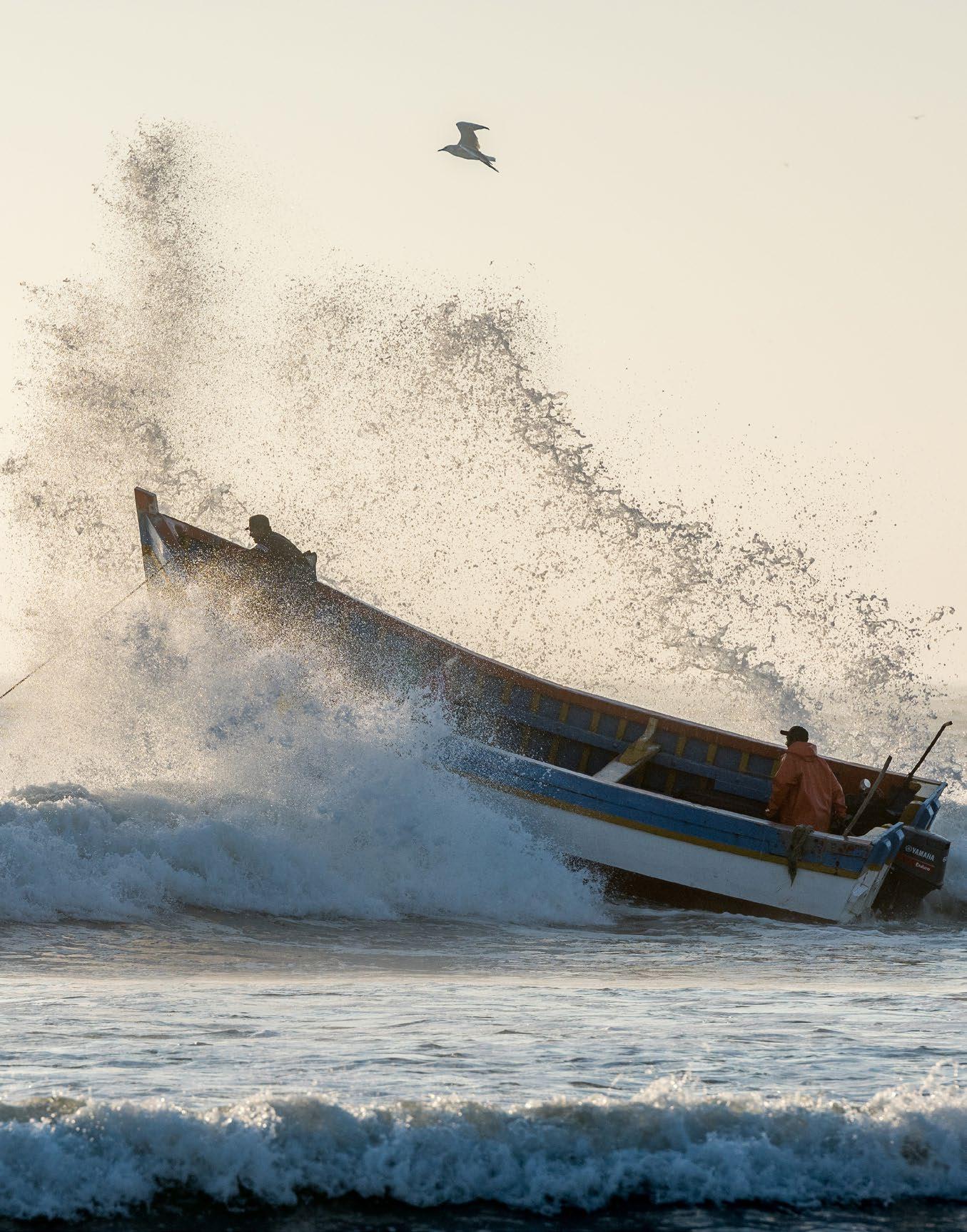
©
Calvin11
Oceana/Juan Carlos
For a year, Oceana campaigned for a bottom trawling ban in Rio Grande do Sul, Brazil’s southernmost state and home to some of the country’s most important and productive fishing grounds. And after months of organizing, researching, lobbying, and protesting, success hinged on a single page of numbers – the personal contact information of 45 state representatives who would be voting on a bill to outlaw bottom trawling across the state.

In the lead-up to a major election, Oceana took those numbers and gave them to local artisanal fishers, who began texting en masse. More than 18,000 fishers and their families sent WhatsApp messages to representatives, calling on them to vote in favor of the Sustainable Fisheries Act that Oceana had drafted. A favorable decision, they said, would prevent industrial fishers from the neighboring state of Santa Catarina from sailing south and catching most of Rio Grande do Sul’s fish, leaving few behind for locals.
“The fishers created a huge buzz and drove the representatives crazy,” said Ademilson Zamboni,
Oceana’s leader in Brazil. “The representatives would say, ‘OK, I already received it thousands of times. We will approve the law. Please stop texting!’”
In an unprecedented victory, the state government unanimously approved the Act on August 21, 2018, protecting 13,000 square kilometers of ocean from bottom trawling. Since then, many local fishers say they have seen more

fish and more shrimp in their nets. Alexandre Carinha Novo, coordinator of Rio Grande do Sul´s Fisheries Organizer Union, said the law is “already bringing a return, despite being a very young law,” and fishers have seen an increase in species that had never been caught before.
Nilmar Conceição is another fisher who has benefited. For him, fishing and survival have
12
Feature
Local fishers in Rio Grande do Sul display a banner which reads, “Protect fish always. RS (Rio Grande do Sul) for a sustainable fisheries law.”
Nilmar Conceição, a local fishing leader in Rio Grande do Sul, speaks at a workshop hosted by Oceana. Conceição has been an outspoken advocate of sustainable fisheries management.
© Oceana Brazil
© Oceana Brazil
always been inextricably linked. His father died when he was just a child, and he fished to support his family, bringing seafood home for his mother to process and sell. Now the leader of several fishing organizations, he credits Oceana with helping fishers protect their coastal waters.
“Without Oceana we wouldn’t have this law,” Conceição said. “Oceana is vitally important to us because we want to improve the fishery in Rio Grande do Sul. Their support is fundamental, because without their help, how could we bring all these people and all this knowledge together?
The relationship is reciprocal: This victory, and many others around the world, could not have been won without local fishers. “Patience, persistence, steadfastness, and understanding are the cornerstones of Oceana’s relationships with artisanal and small-scale fishers,” said Oceana’s CEO, Andy Sharpless. “The nature of this collaboration depends on unique country contexts, but there are a few central tenets to Oceana’s approach: Fishers are encouraged to get involved in political processes that affect them; local knowledge and customs are respected; partnerships are built to be long-lasting; and grassroots organizing, technology, and communication are used to mobilize fishers.”
The face of small-scale fishers
When thinking of commercial fishing, towering steel trawlers, powerful industrial equipment, and well-staffed crews might come to mind. But of the 120 million people who work in marine capture fisheries, almost 90% are smallscale fishers who generally use
of this
boats that are less than 20 meters long. Specific definitions of smallscale fishing vary from one country to the next, but artisanal fishing refers to operators who use a lower level of technology. Most of these fishers live in developing countries, and nearly half of them are women.
Despite their importance to coastal livelihoods around the world, smallscale fishers are often excluded from political decisions that affect the fisheries they depend on. These fishers are also the ones who lose out when short-term profits are prioritized over the sustainability and abundance of a species. In the Philippines, for instance, illegal commercial fishers in the southwestern province of Sulu are driving municipal small-scale fishers
out of their jobs – and even out of the country. With fewer fish closer to the coast, some fishers have taken desperate measures to make ends meet.
“They had to resort to land-based income sources or even working abroad just to be able to feed their families,” said Danny Ocampo, campaign manager for Oceana in the Philippines. “That’s a clear displacement of municipal fishers from their rightful fishing grounds.”
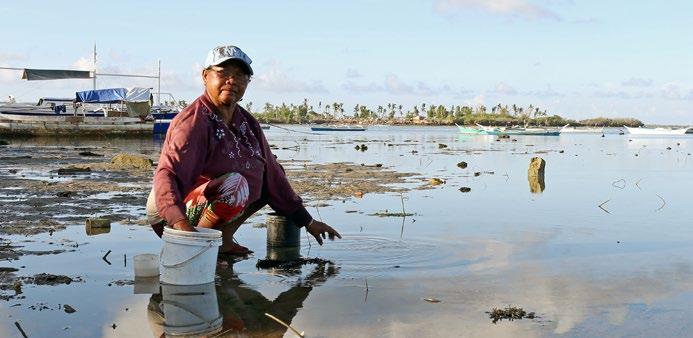
Oceana is galvanizing smallscale fishers to protect their fishing grounds. In return, they have helped Oceana achieve its campaign targets to protect abundance, biodiversity, and local livelihoods.
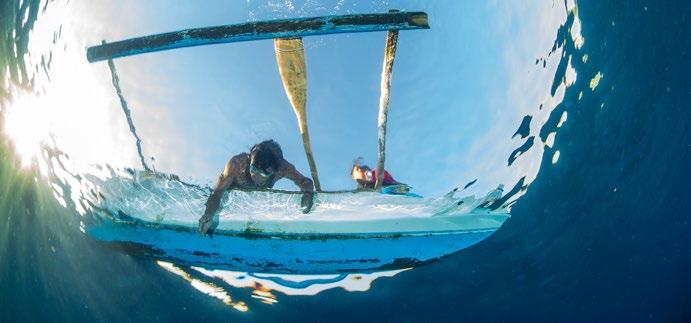
SUMMER 2020 | Oceana.org13
In developing countries, small-scale fisheries contribute over half of the national fish catch, and the overwhelming majority
food is consumed locally. In this photo, a woman is seen collecting shells on Bantayan Island in the Philippines.
An Apo Island fisherman peers into the water from his banca – a type of boat commonly found in the Philippines – as his daughter looks on. Fishing is a common occupation in many coastal parts of the country, which comprises more than 7,000 individual islands.
© Oceana/Steve De Neef
© Oceana/Candeze Mongaya
A tale of two countries
In both the Philippines and Belize, small-scale fishers often live precariously, with their livelihoods dependent on their daily catch. To reserve resources for those who need them most, only artisanal boats can legally fish in municipal waters in the Philippines, which extend 15 kilometers from the coast. And in Belize’s waters –where sailboats, skiffs, and canoes dominate – all fishing is small-scale.
In Tañon Strait, one of the largest protected areas in Philippine waters, Oceana teamed up with municipal fishers to put an end to illegal commercial fishing, ultimately clinching a victory in 2017 when vessel monitoring became a requirement for all fishers entering the Strait.
Oceana also helped local fishers form the Tañon Strait Fisherfolks Federation, a group focused on enforcing the law and supporting the community. In recent months, the federation has helped fishers continue to work amidst the coronavirus pandemic. When ice plants shut down, federation members banded together to produce ice in their homes, enabling them to safely transport their seafood products to market.
Now, as Oceana pushes for an end to all illegal commercial fishing in municipal waters by 2022, smallscale fishers are serving as Oceana’s eyes and ears. The Karagatan Patrol Facebook page that Oceana created now has more than 3,000 members who report illegal fishing activities when they spot them.
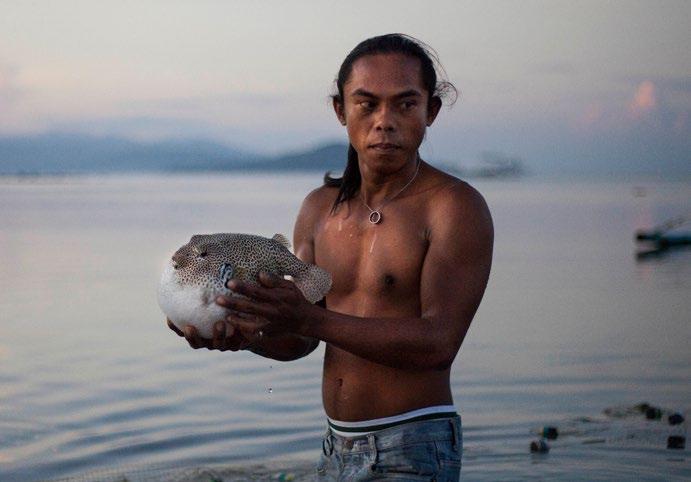
Technology solutions have also been useful in Belize, where Oceana is working on an app to connect sustainable, small-scale fishers with restaurants in tourist areas that have a high demand for responsibly-
sourced seafood. This latest step is part of the Fish Right Eat Right certification program that Oceana and its NGO partners launched in 2016.
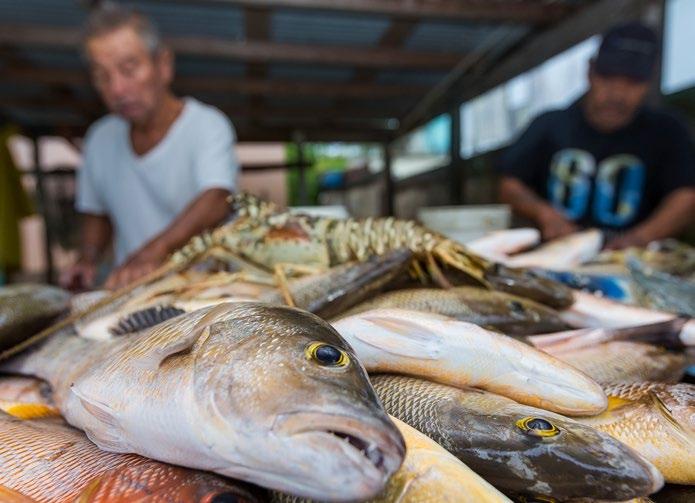
These types of partnerships also helped Belize become the first country in the world to ban all offshore oil drilling in 2018. On the ground, Oceana achieved this
victory by holding community meetings with fishers, rallying support on social media, garnering enough signatures for a petition, and having the patience and endurance to keep these efforts up for nearly a decade. Now, fishers’ livelihoods – and pristine places like the Belize Barrier Reef – are protected well into the future.
14 Feature
The fresh catch of the day is displayed at a market in San Pedro, Belize. Finfish like groupers and snappers are common exports, but conch and lobster are the country’s main seafood products.
Pufferfish are a delicacy – albeit a risky one – in some parts of the Philippines and other Asian countries. These fish secrete a poisonous substance that can be deadly.
© Oceana Belize
© Oceana/Jenn Hueting
Knowledge is power
Specialized knowledge of local fisheries is another reason why Oceana collaborates with fishers to achieve its campaign goals. Artisanal fishers in Chile’s Juan Fernández archipelago, for instance, are rock lobster connoisseurs. They have been sustainably catching this endemic species for over a century, using wooden traps and measuring tools to verify that each spiny crustacean is large enough to sell.
In a documentary produced by Oceana, lobster fisher Teodoro Rivadeneira demonstrates this technique. “This one’s for export, for China. Its shell measures 11.5 cm,” he said after measuring the carapace – the part of a lobster’s body that extends from the back of its eyes to the start of its tail. Others didn’t make the cut. Before throwing an undersized lobster back into the ocean, Rivadeneira held it aloft and said, “In other areas they’ll eat them like this, but not here. We take care of them here.” Sustainability is top of mind for lobster fishers, who were
Liesbeth van der Meer, Leader of Oceana in Chile
instrumental in helping Oceana create the Juan Fernández Archipelago Marine Park – a victory that was achieved in 2018. “They have told us the ways in which we need to protect the ocean,” said Liesbeth van der Meer, Oceana’s leader in Chile. “In this case, they are truly our teachers.”
Oceana staff supplied the fishers with scientific data, and in exchange received a wealth of knowledge that ultimately helped them win their campaign.
Further north, in the municipality of La Higuera, Oceana and local fishers are fighting to protect their
ocean from a mining project that would put many marine species in harm’s way, including most of the world’s Humboldt penguins and several valuable commercial species.
“The most important power that we have in La Higuera is the passion that local fishers are showing while defending their ocean. They are willing to fight and protest if necessary,” van der Meer said.
“The times when they have been protesting are the times when we have been winning this campaign. This campaign will be won through the voice of the people.”

SUMMER 2020 | Oceana.org15
Manuel De Rodt Solis, a lobster fisherman from Chile’s Juan Fernández Archipelago, holds up one of his catches. Oceana continues to work with local fishers to help ensure the marine park is effectively protected.
The times when they have been protesting are the times when we have been winning this campaign. This campaign will be won through the voice of the people.
“ “
© Oceana/Mauricio Altamirano
In Chile, the fishing industry supports tens of thousands of artisanal fishers who benefit from science-based policies that ensure the sustainability of fish stocks.

Feature
© Oceana/Claudio Almarza
Defending the law
Back in Rio Grande do Sul, Oceana and artisanal fishers have faced a fight of their own. Though the bottom trawling ban was won, a legal challenge from industrial-scale trawlers threatened to undo those protections.
First, they sought a motion of injunction to reopen the fishery, but Oceana and artisanal fishers successfully argued that it was a recipe for environmental disaster. In December 2019, Oceana assembled a group of artisanal fishers to meet with Justice José Celso de Mello Filho and make their case. And although Oceana helped the fishers prepare for this meeting – their
first-ever experience in Brazil’s Supreme Court – it was the fishers who did all the talking.
“I believe that this was crucial to Justice Mello Filho’s decision to deny the motion of injunction because the fishers expressed, in their own words, what they were feeling and how the bottom trawling ban was important to them,” Zamboni said. “They don’t need a person in front of them talking in their place.”
The trawlers’ challenge has continued to wind its way through the legal system, but a ruling in a separate case could set a favorable precedent. After the legality of a bottom trawling law in the northern
state of Amapá was challenged, the Supreme Court ruled in June that state bottom trawling bans are completely constitutional, delivering a major victory for the oceans.

“Their unanimous decision shows that the judges are already aware of the damages caused by bottom trawling,” Zamboni said.
“It´s amazing and rewarding to know that our efforts to mobilize artisanal fishers, and to build a campaign based on science, grassroots organizing, and communications, have moved Brazil closer to protecting its ocean ecosystems from bottom trawling.”
SUMMER 2020 | Oceana.org17
Oceana’s team in Brazil also worked with artisanal fishers to set science-based quotas for mullet, an important fish known locally as tainha (pictured above). Oceana created an online tool called the “tainhometer” where fishers could report their catches. The tool proved popular with local fishers, and this newfound data helped Oceana win its campaign in 2018.
© Oceana/Matias David Quinteros
Save the Oceans, Feed the World 2.0
Studies show that the oceans, if restored, can feed a billion mouths. But whose?

Feature

© Shutterstock/Emily-Jane Proudfoot19
A group of people share a meal in Senegal, a country that depends on fish for food and micronutrients.
Sardinella has long been a staple food in Senegal. This herring-like fish, known locally as yaboy, plays such an integral role in local diets that it’s one of the ingredients in Senegal’s national dish, thiéboudienne: fish with rice and vegetables, simmered in tomato sauce. When it’s not eaten fresh, it’s soaked in brine and dried, then trucked to inland parts of Senegal and other West African countries, where ocean-caught fish are an essential source of animal protein.
This little fish is cheap, too – or at least it used to be, before the foreign-owned fishmeal factories arrived and started buying up sardinella at prices the locals couldn’t afford. Once the sardinella are taken to a warehouse, dumped down a chute, and pulverized by high-powered blades, the resulting powder is exported to wealthier countries – often China – and fed to carnivorous farmed fish and pigs.
This has a reverse Robin Hood effect: Sardinella are taken from the poor to feed the rich, with the potential for catastrophic consequences. Senegal’s waters are already susceptible to overfishing and climate change-related impacts, which could further hurt fish stocks and the millions of people reliant on oceans.
“This deprives poorer people of previously affordable, nutritious fish, while producing costly farmed fish that are then largely consumed by people in the rich West or in

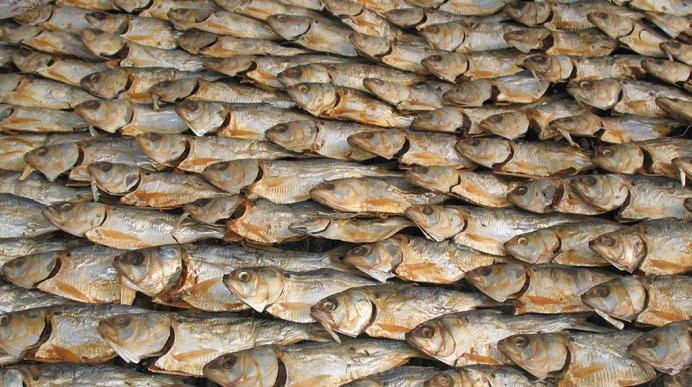
East Asia,” Oceana Board Member Dr. Daniel Pauly said. Even worse, this process creates a net protein loss for the planet. So when we say fish is good for “us,” Pauly explains, we need to ask who exactly is reaping these benefits. To tackle
this tricky question, Oceana has begun exploring an expansion of its “Save the Oceans, Feed the World” initiative to focus not just on the countries catching the most fish, but also on the people who need fish the most.
20 Feature
Oceana expanded its ‘Save the Oceans, Feed the World’ initiative to focus not just on the countries that are catching the most fish, but also on the people who need fish the most.
When small fish are ground up into fishmeal for use in animal feed, as shown in the above photo, it removes a crucial source of protein and micronutrients from local people’s diets.
© Shutterstock/Thor Jorgen Udvang
Fish are laid out to dry in the Casamance region of Senegal. According to Dr. Daniel Pauly, “Over 40 industrial processing plants that turn sardinella and similar small fishes into an animal feed called fishmeal have recently been built – mainly by Chinese enterprises – along the coast of Senegal and neighboring countries, in the face of local opposition.”
© Shutterstock/Cesar J. Pollo
What is food security?
Support Oceana long enough and you will hear this statistic: More than 90% of the world’s wild fish catch comes from the national waters of just 29 countries and the European Union. It’s the driving force behind Oceana’s country-bycountry approach, as well as the Save the Oceans, Feed the World initiative that launched in 2013 with the impetus to rebuild ocean abundance. Since then, Oceana has won over 100 victories and expanded its work to several new countries, including Brazil, the Philippines, Peru, Canada, and Mexico.
But as we’ve seen in Senegal, fish are not always eaten where they’re caught. Oceana’s new efforts – colloquially dubbed Save
the Oceans, Feed the World 2.0 – are exploring a more nuanced discussion of the links between fishing, nutrition, and food security.

According to the Food and Agriculture Organization, there are four pillars to food security: availability, access, utilization, and stability.
Dr. Katie Matthews, chief scientist at Oceana, explained, “Availability is whether or not there is food to be eaten, access is whether you can get that food for yourself or your family, utilization is whether you can prepare it in such a way that it nourishes your body, and stability is consistency across those previous three dimensions.”
The original framework primarily addresses the “availability” pillar,
but what about the others?
Matthews said that while Oceana is still focused on ensuring there is fish to be caught, they are also analyzing opportunities to prioritize work on fisheries that are most essential to local nutrition, food security, and livelihoods.
“We want to give more consideration to access,” Matthews said. “For example, rebuilding a fishery that supports an offshore foreign fleet which sends all of its catch abroad and doesn’t improve the food security of nearby coastal communities is not going to be helpful in this framework.”
SUMMER 2020 | Oceana.org21
Dozens of fishing boats are shown in Indonesia’s Muncar port. Indonesia’s fisheries are overwhelmingly dominated by small-scale fishers, but they are largely unregulated. This lack of regulation drives stock depletion and creates an elevated food security risk.
Stability Food Security Availability Access Utilization
© Shutterstock/Putu Artana
Rebuilding a fishery that supports an offshore foreign fleet which sends all of its catch abroad ... is not going to be helpful in this framework.
Dr. Katie Matthews, Oceana chief scientist
“ “
A Vietnamese woman mends a fishing net. Vietnam is among the countries that are most dependent on the ocean for food or livelihoods.
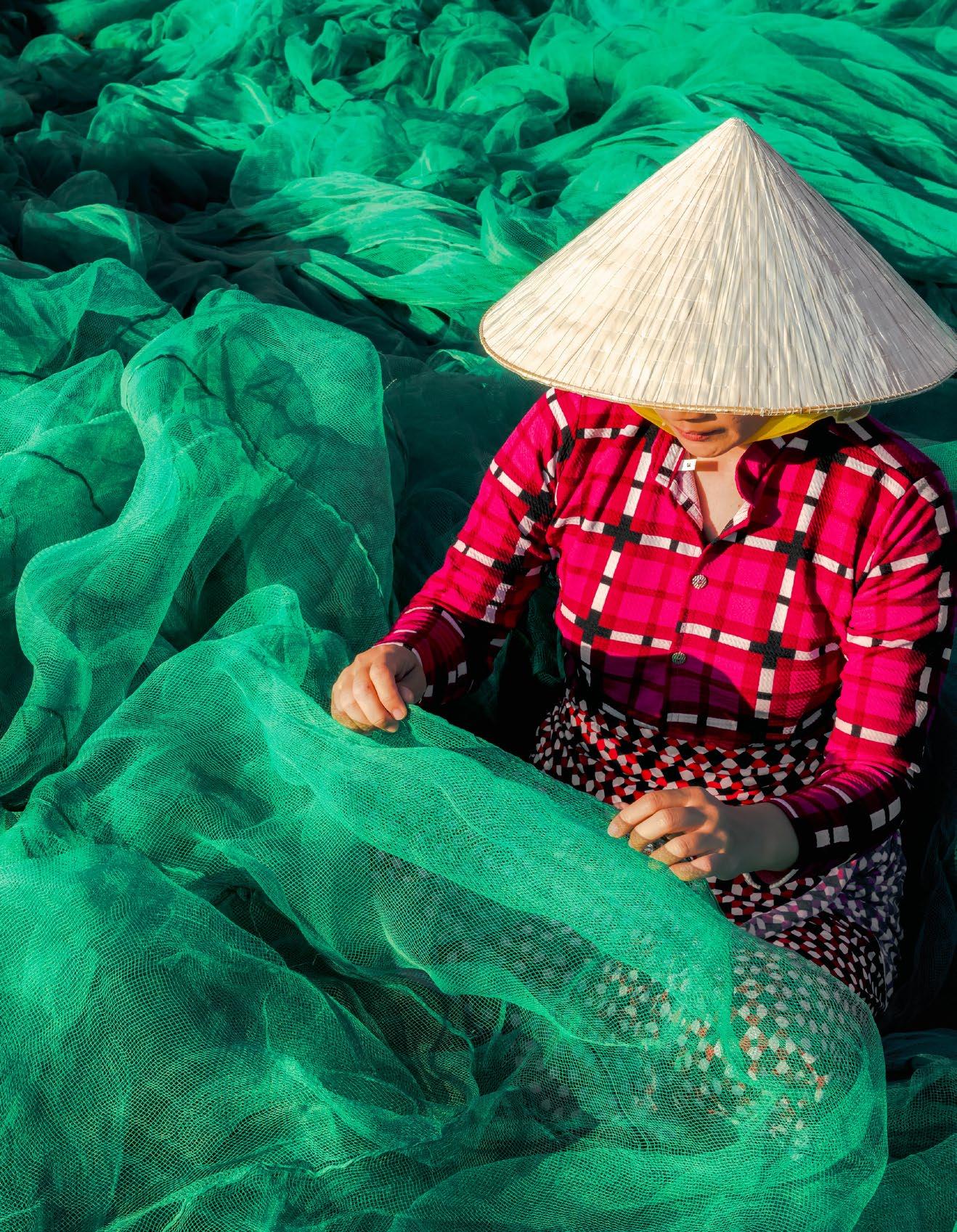
Feature
© Shutterstock/Natnan Srisuwan
Crunching the numbers
The connection between fishing and food security is often murky, but recent studies have shone a light on the subject. A 2019 study led by Dr. Christina Hicks found that a little bit of fish can go a long way, provided that it’s sold and consumed locally. In Namibia, 9% of the country’s annual fish catch could supply the entire coastal population – nearly half of which is iron-deficient –with enough iron. And in the South Pacific, just 1% of Kiribati’s catch could provide all children under five with a healthy helping of calcium.
The problem, then, is not a lack of fish – it’s where the fish end up. “Nutrient surpluses of some coastal countries in which nutritional needs are not being met highlight that large yields do not necessarily lead to food and nutrition security,” Hicks and other authors wrote in their paper, published in the journal Nature last September.
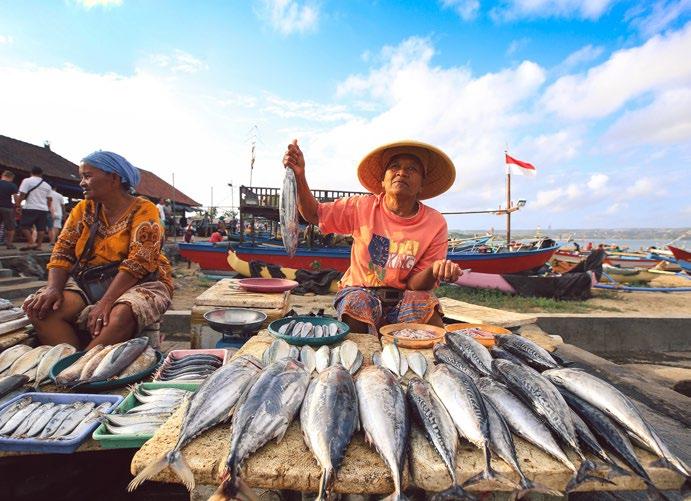
Global demand for fishmeal is just one reason why seafood might not be eaten by the most vulnerable populations. Others may include food waste within the supply chain, economic or physical barriers to access, the stipulations of international trade deals, and foreign fleets that plunder other countries’ waters.
This partly explains why 629 million people around the world are both reliant on fish for food and vulnerable to micronutrient deficiencies, according to a 2016 study led by Dr. Chris Golden and co-authored by Dr. Eddie Allison, both Oceana Science Advisors. Some key differences emerge when you compare the list of the top fishing nations – used in the Save the Oceans, Feed the World 1.0 framework – to the list of countries with the most people reliant on fish and vulnerable to their loss
(shown in the graph below). For example, although Indonesia is second to China in terms of seafood catch, it tops the latter list where fish dependence and nutrition
are concerned. The latter list also includes countries not among the top fishing nations globally, such as Senegal, Mozambique, and Sri Lanka.
This graph (redrawn from Golden et al. 2016) shows the distribution of the 629 million people around the world who are reliant on fish for food and at risk of micronutrient deficiency. People in Indonesia, for instance, comprise 38% of this demographic.
SUMMER 2020 | Oceana.org23
A fishmonger works at the Kedonganan Fish Market in Bali, Indonesia. Millions of Indonesians rely on wild capture fisheries for food security.
Indonesia PhilippinesThailand Malaysia Peru Ghana Mozambique Sri Lanka Cameroon Cote d’Ivoire Angola Yemen Senegal Guinea U.A.E. Others 38% 15%11% 4% 4% 4% 4% 3% 3% 3% 3% 3% 2% 2% 1% 1%
© Shutterstock/Eo naya
After returning from a trip to Raja Ampat, Indonesia, pictured above, Oceana Science Advisor Dr. Boris Worm said coral reefs had

fishing and poaching, which were rampant until 2000. “Since then, a community-based marine protected area and fisheries tenure
truly remarkable recovery of the reefs – and the fish, shark, and turtle species that depend on them – and has brought about new
people,” he said.
‘Feeding the world’ in action
Right now, 821 million people around the world are living in hunger. This crisis is likely to escalate, with the population projected to grow by 2 billion people over the next 30 years. But by ensuring that fisheries are managed sustainably, and by protecting vulnerable habitats, wild-caught fish can help chip away at global hunger.
A recent paper by Dr. Carlos M. Duarte and a team of marine scientists from 10 countries highlighted past ocean recoveries. Using history as a guide, scientists estimated that much of the world’s oceans could be restored
within 30 years. Oceana Science Advisor Dr. Boris Worm (who is also interviewed on page 27) was one of those authors. He said he was surprised to see how quickly and strongly some species and ecosystems have bounced back.
“One example is the recovery of fishery resource species on Georges Bank, after half of it was closed to fishing in 1994,” Worm said. “The results for scallops and haddock, for example, are quite spectacular and demonstrate the resilience that is inherent in many ocean ecosystems even today.”
From the beginning, Oceana’s Save the Oceans, Feed the World initiative has stressed that 1 billion
has led
people could be given a healthy seafood meal every day if we protect and restore the ocean’s resources.
Going forward, Matthews said the key to success will be determining how these resources can be delivered to the people who need them most.
“The world can no longer continue to ignore the role that marine fisheries play in food security and nutrition for more than 700 million people around the world,” Matthews said. “We must ask how fisheries can better serve local communities.”
24
Feature
recovered from blast
program
to the
revenue streams for local
© Shutterstock/Ye Choh Wah
the circle…
Be
Be
part of the ocean’s future.
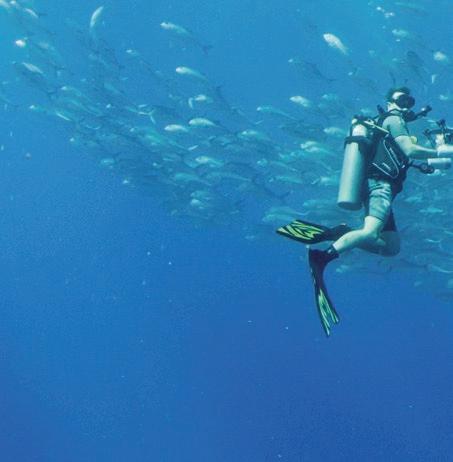
part of the
ocean’s
future.
Join the LegaSea Circle by including a gift for Oceana in your will, trust, or beneficiary designation. You can help restore and protect marine wildlife and habitats for years to come, while enjoying financial benefits for yourself or your loved ones.

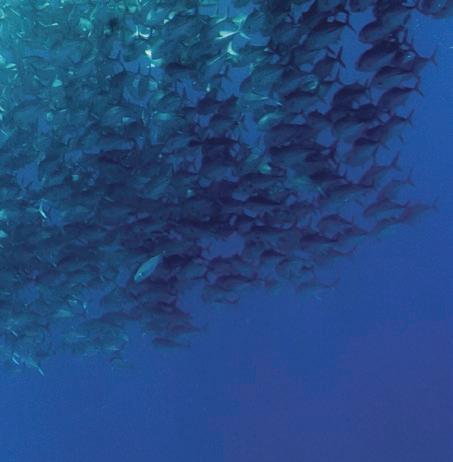

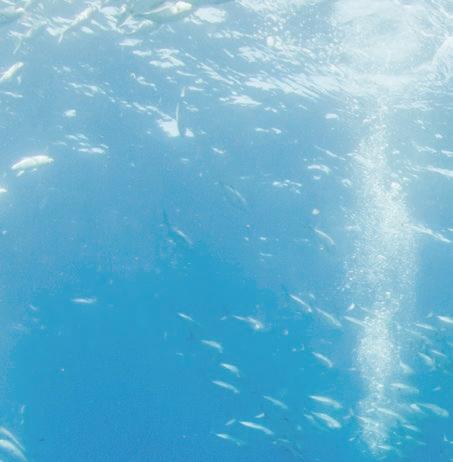


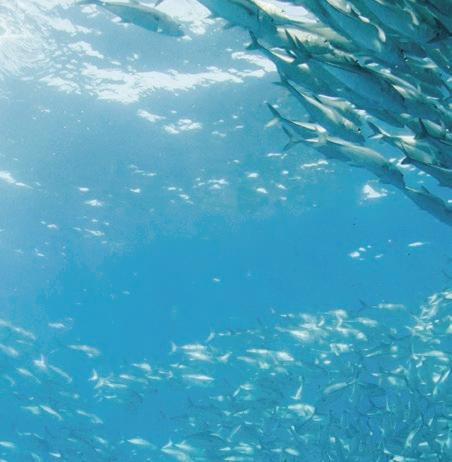
Join the LegaSea Circle by including a gift for Oceana in your will, trust, or beneficiary designation. You can help restore and protect marine wildlife and habitats for years to come, while enjoying financial benefits for yourself or your loved ones.
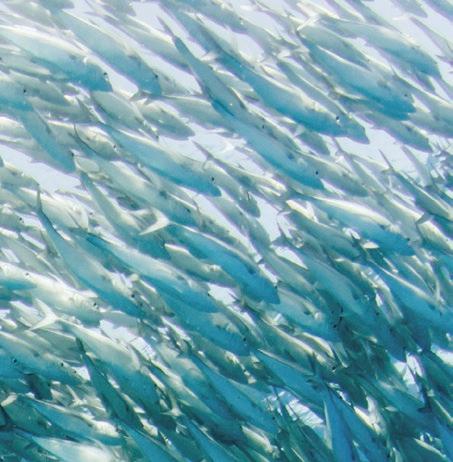
SUMMER 2020 | Oceana.org25
Visit
information. Email plannedgiving@oceana.org or
oceana.org/legasea for more
call (202) 833.3900 to request our LegaSea Circle brochure. Join
Email
Visit oceana.org/legasea for more information.
plannedgiving@oceana.org or call (202) 833.3900 to request our LegaSea Circle brochure. Join the circle…
Our victories over the last year
Chile prevents the construction of harmful salmon farms in Patagonia New York bans plastic foam food containers and packaging
U.S. government protects whales and sea turtles in California-based fishery Belize phases out single-use plastics and Styrofoam
New U.S. protection will save sea turtles from dangerous shrimp trawls
U.S. West Coast fishery council protects marine life by blocking return of harmful longlines
More than 140,000 square miles of U.S. West Coast seafloor habitat protected

California protects Pacific herring, a fish critical to ocean health and abundance
Mexico provides public access to vessel tracking data for first time
Sustainable fishing gear approved as alternative to deadly drift gillnets off U.S. West Coast
26 © Oceana/Carlos Suarez
Supporter Spotlight
BW: There have been hundreds of attempts to restore damaged salt marshes and mangrove forests, and in reviewing those we found that they often bore spectacular results, not just in restoring the ecosystems but also the essential ecosystem services that they provide to us. These include their capacity to buffer storms and floods, and protect our coastlines from some of the effects of climate change and sea level rise.
Your team wrote that climate change is the “critical backdrop against which all future rebuilding efforts will play out.” To what extent will our efforts to mitigate greenhouse gas emissions determine the future health of our oceans?
Oceana Science Advisor Dr. Boris Worm on restoring the world’s oceans by 2050
The good news is that we can rebuild marine life and restore much of the world’s oceans in just 30 years if we take action to protect species and ecosystems at risk. A team of marine scientists from 10 countries reached this conclusion after reviewing past ocean recoveries following conservation interventions.
Oceana is already working on many of the next steps that scientists recommended – namely reducing overfishing and bycatch, as well as protecting vulnerable species and habitats. Global management reforms could help many depleted fish stocks return to a healthy enough biomass to support sustainable fishing in just 10 years.
As one of the authors of that paper, Oceana Science Advisor and marine ecologist Dr. Boris Worm explained what they learned and why it’s encouraging news for our oceans.
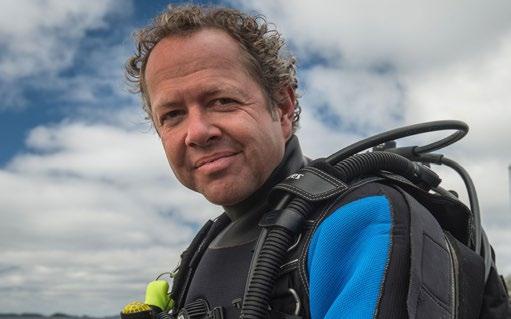
Did any of your findings surprise you?
BW: Yes, I was surprised how quickly and strongly some species and ecosystems recovered. For example, humpback whales in the southern hemisphere had been recovering by 10-13% per year since the late 1960s and increased from several hundred to an estimated 40,000 individuals today. That is pretty surprising for a large, long-lived creature.
Why are mangroves and salt marshes good examples of habitat restoration projects?
BW: Climate change is the fastest rising threat to ocean ecosystems, and as such it needs to be brought under control if rebuilding and conservation efforts are to bring about the expected results. This is especially clear in coral reefs which could largely disappear by the end of the century if climate change, ocean warming, and ocean acidification are not mitigated in accordance with the Paris targets.
What other pressures need to be alleviated for ocean abundance to be restored by 2050?
BW: Overfishing needs to be brought under control, and destructive and unselective fishing practices need to be replaced by smarter ways of harvesting. Widespread pollution with excess nutrients from fertilizer use and human wastewater, as well as persistent synthetic chemicals, including plastics, must not enter the ocean anymore. And efforts to restore damaged ecosystems need to be scaled to a global level.
Your team wrote that taking steps to rebuild marine life is not only a “smart economic objective,” but also an “ethical obligation.” Why did you feel it was important to include this moral call to action?
BW: The extinction of species and the destruction of vital ecosystems is a moral failing as much as an ecological and economic disaster. It would be wrong to disregard this ethical dimension, in my view, especially since it is strongly felt by so many people. And because of that groundswell of dissatisfaction with the status quo, in 1992 under the Convention of Biological Diversity, humankind collectively decided to stop and reverse these trends. Our paper indicates that now we are beginning to see some of the fruits of these efforts, at least in some places.
SUMMER 2020 | Oceana.org27
Dr. Boris Worm is a professor within the Biology Department at Dalhousie University in Halifax, Nova Scotia, Canada.
© Nick Hawkins/nickhawkinsphotography
Ask Dr. Pauly How is COVID-19 affecting fisheries?
The new coronavirus is affecting all aspects of our lives and our economies. In an environment where almost everything is uncertain, it is impossible to fathom the full impact the virus will have on our lives, our economy, and our planet. For some segments of the economy, inferences can be drawn from the history of earlier pandemics.
For fisheries, however, the instructive events are not earlier pandemics. They are instead the effects of wars, another type of recurring catastrophe affecting humans. In wartime, young men who would otherwise be fishing are recruited into armies, and their boats are claimed by governments to guard coastlines or sweep for mines.
Thus, the uncaught fish could grow, spawn, and produce new fish that could also grow and spawn new generations of fish, thereby increasing their abundance in the water. After both WWI and WWII, when fishing from Northern European waters was sharply curtailed for three or more years, fish catches were huge. The war we waged on fish had ceased for a while (see graph above), and the fish recovered.
Recent articles from China, and a vast number of countries from Europe and North America, suggest that some fish populations are
Landings of demersal fish (t-10³) 900 800 700 600 500 400 300 200 100 1880 1900 1920 1940 1960 Year 1980 2000 2020 0
Catches of British trawlers from 1883 to 2004, showing the effects of two world wars on fishing around the British Isles and in the open North Sea, redrawn from Thurstan, R.H., Brockington, S., and Roberts, C.M., 2010. The effects of 118 years of industrial fishing on UK bottom trawl fisheries. Nature Communications, 1(1), pp.1-6.
either increasing or changing their behaviors, following local reductions of fishing pressure due to measures taken to reduce the impact of the virus. This is the marine equivalent of various animals that are now entering empty city streets, from goats on Piccadilly Circus in London to wild boars in Haifa.
When the need for social distancing eventually decreases, it would
be nice if this respite allowed exploited fish stocks to rebuild further. Fisheries science has strong evidence that exploited fish populations will quickly recover when given a break. This would ultimately enable fishers to earn more, and obviate the need for the government subsidies that presently keep so many fishing vessels afloat to scrape up depleted fish populations. In the meantime, however, governments, wherever
28
28
they can, have to ensure that fishers who cannot work because of this pandemic will not be forgotten.

On Canada’s West Coast, we have a traditional fishery (practiced in various forms for thousands of years) for herring roe on kelp (i.e., for eggs deposited on kelp fronds by herring that go on living). This fishery provides members of the Heiltsuk First Nation about 6 million Canadian dollars per year, with an additional
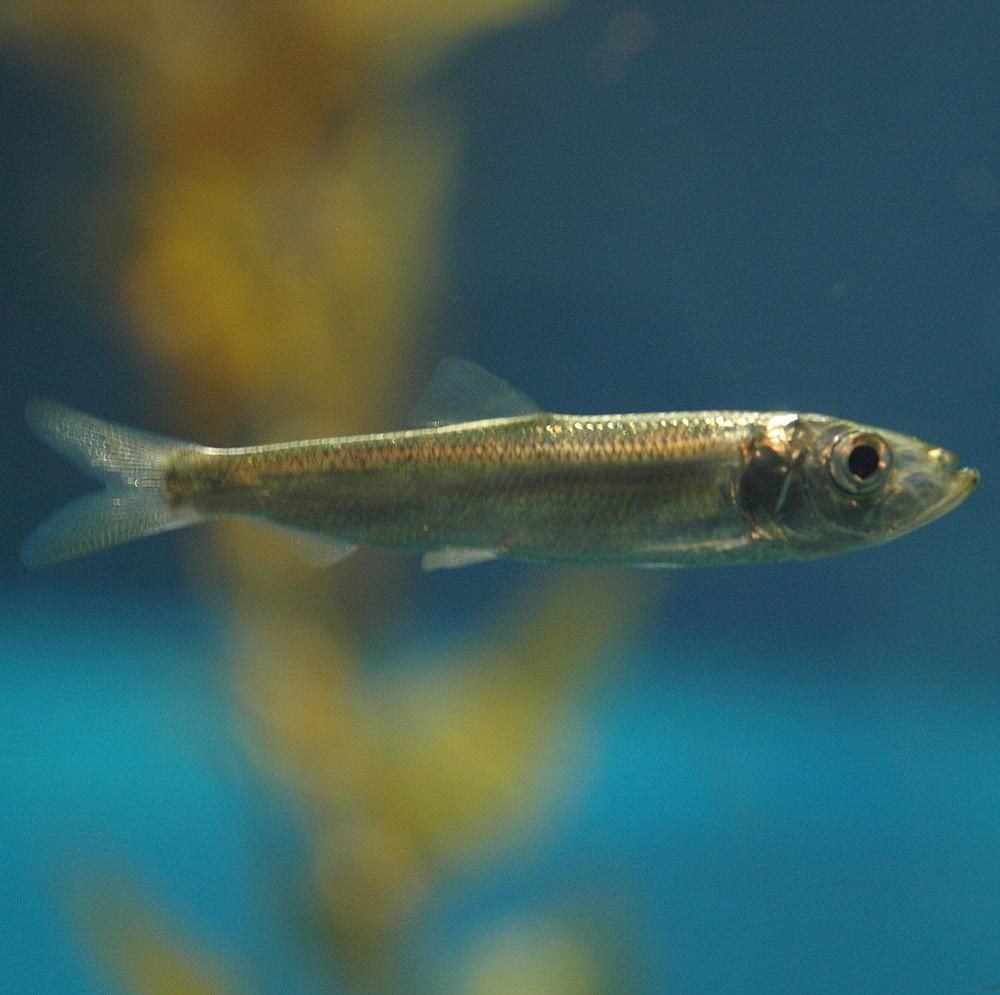
quarter of a million dollars in salaries to the workers in 40 small processing plants. This fishery, like many throughout the world, is now closed.
Thus, while a respite for fish and the ecosystems in which they are embedded is a good thing, we should not forget the price that has to be paid for this. In the example provided here, it is paid by fishers who do not even kill the fish they rely on.
SUMMER 2020 | Oceana.org29
SUMMER 2020 | Oceana.org29
Dr. Daniel Pauly is the founder and director of the Sea Around Us project at the University of British Columbia’s Institute for the Oceans and Fisheries, and is a member of the Oceana Board.
A juvenile Pacific herring is pictured. Herring eggs are used by many First Nations people for food and cultural purposes.
Fisheries science has strong evidence that exploited fish populations will quickly recover when given a break.
“ “
Wikimedia Commons/OpenCage
A sustainable seaweed to spruce up salads and stir-fries

30 Chef’s Corner
© Shutterstock/boommaval
Kelp
By Mark Bittman
It’s 2020, and the seaweed revolution is upon us. Chef and restaurateur David Chang and fastcasual salad chain Sweetgreen have been in the news touting their new “tingly sweet potato and kelp bowl,” noting that seaweed is nutritious, delicious, and good for the health of our planet.
They’re not wrong. But you don’t have to go to Sweetgreen to add seaweed to your diet. Because it’s largely sold dried, it’s a pantry staple that has uses beyond salads and stir-fries.
Most sea greens are an outstanding source of calcium and high in vitamins (especially A, C, E, and B12, of which there are few vegetarian sources) and minerals (potassium, magnesium, phosphorus, iron, and iodine, which is difficult to obtain from natural sources).
Kelp – sometimes called kombu – contains a substance similar to MSG that enhances flavors. You can broil or braise it, or add a strip or two to slow-simmering foods like beans, grains, soups, and stews to add instant brininess. You can also use kombu dashi (see recipe) in place of water or stock in various recipes.
It is sold in large, thick, hard pieces that are dark green and usually coated with a white powder, or as “noodles” for use in Korean cooking. It’s occasionally sold fresh, especially on the U.S. West Coast.
To prepare it, rinse once and soak in at least 10 times its volume of water until tender, 5 to 10 minutes or more. Drain and gently gather and squeeze the pieces to remove excess water. Pick through the sea greens to sort out any hard bits (there may be none) and chop or cut up if the pieces are large.
I commend restaurants for adding kelp to their menus. Let’s stock it in our own kitchens, too.
Mark Bittman is an award-winning food journalist, author, and former columnist for The New York Times. He is a fellow at the Union of Concerned Scientists and a faculty member of Columbia University’s Mailman School of Public Health.

Udon Noodle and Miso Soup with Kelp Dashi
From How to Cook Everything by Mark Bittman
Makes 4 servings Time: About 45 minutes
Ingredients: 8 ounces dried, frozen, or fresh udon noodles 1 1/2 quarts dashi (see below) or water 1/3 cup any miso 2 cups thinly sliced shiitake mushrooms or a handful dried 1/2 cup chopped scallion
Dashi: 1 piece dried kelp (kombu), 4 to 6 inches long 1/2 to 1 cup dried bonito flakes (substitute 2 or 3 nickel-sized pieces of ginger)
Instructions
Dashi (makes 8 cups):
1. Combine the kelp and 8 cups water in a medium saucepan over medium heat. Do not allow the mixture to come to a boil; as soon as it is about to, turn off the heat and remove the kelp (you can use it as a vegetable in stirfries or salads if you like).
2. Immediately add the bonito flakes and stir; let sit for a couple of minutes, then strain. Use the dashi immediately or refrigerate for up to 2 days. For a vegetarian option, omit the bonito flakes and add ginger (don’t bother to peel).
Noodles:
1. Bring a large pot of water to a boil and salt it. Add the udon and cook it until it’s just about done — there should still be a light chew to it — about 5 minutes. Drain it and rinse in cold water until cool; set aside. (If you’re cooking the pasta in advance by more than 30 minutes, hold the pasta in a bowl of cold water or drizzle or toss with a couple tablespoons neutral oil.) If you’re using dried mushrooms, pour some of the boiling noodle water over them to cover; soak until soft, about 30 minutes.
2. Heat the dashi in a large, deep pot over medium heat until bubbles rise from the sides. Put the miso in a bowl, add a cup or so of the hot dashi, and whisk until smooth. Pour the miso mixture into the rest of the dashi and mix.
3. Slice the reconstituted mushrooms, if you’re using them; strain their soaking liquid and add it to the dashi. Add the mushrooms to the dashi and cook gently (do not boil) for about 5 minutes. Add the udon and heat though, garnish with the scallion, and serve.
SUMMER 2020 | Oceana.org31
This image captures a moment in time at La Boqueria market in Barcelona, Spain, long before the COVID-19 pandemic unfolded. The market, which was founded 180 years ago, adapted during Spain’s shutdown by offering online delivery services, while also maintaining physical stalls for those who preferred to shop in person for essential goods. In an April post, the market’s official Facebook page showed pictures of fish vendors wearing masks. The post read, “Buy fish – it’s healthy, it’s good, and our fishermen need you!” Around the world, fishers have been struggling to find buyers for their products, especially with restaurants closed or at diminished capacity.
Duis tincidunt vehicula est, sit amet commodo nibh luctus ac. Fusce elit nulla, euismod placerat consectetur nec, efficitur a tortor. Class aptent taciti sociosqu ad litora torquent per conubia nostra, per inceptos himenaeos.

32
© Oceana/Melissa Forsyth
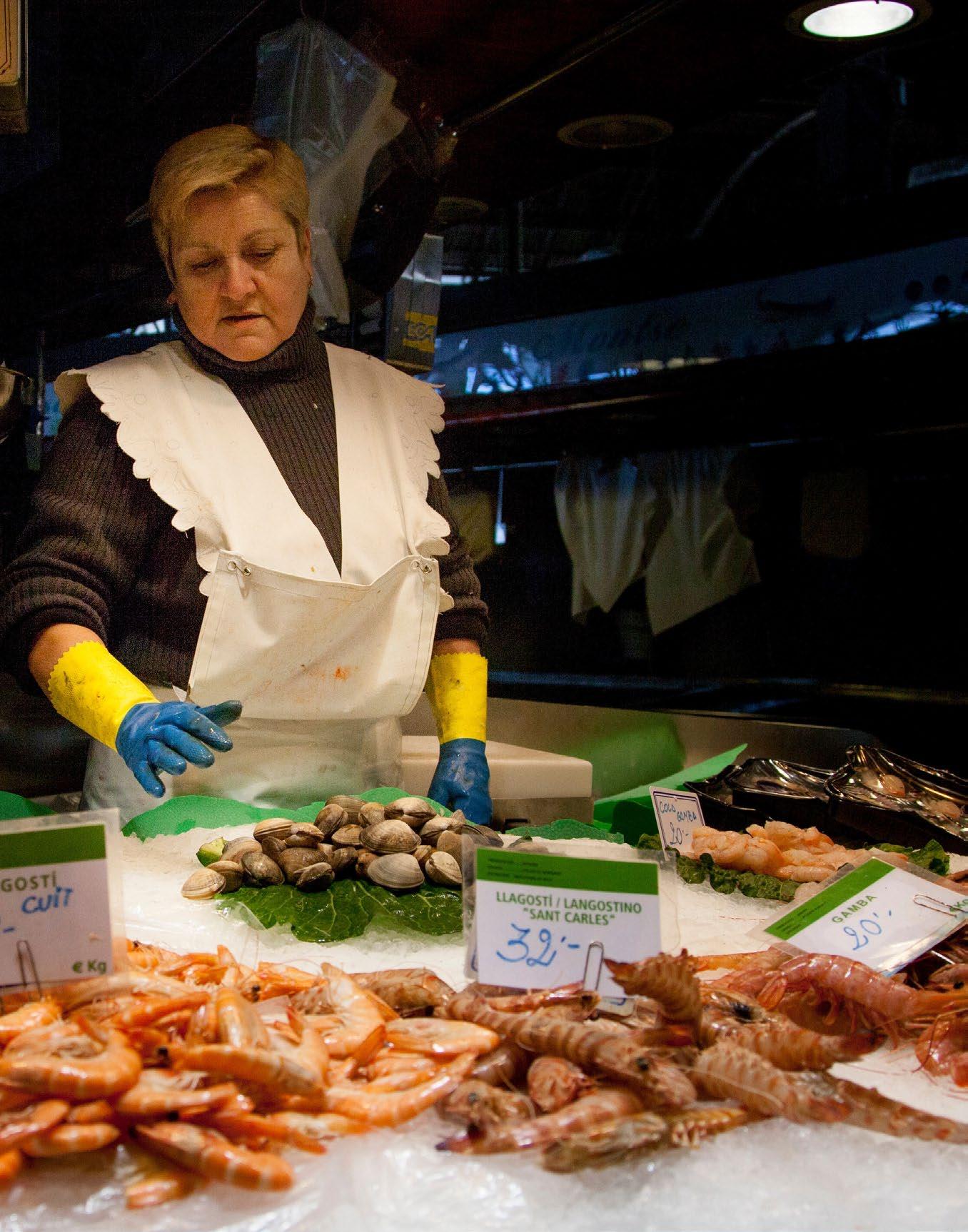
SUMMER 2020 | Oceana.org33
A school of flying fish are seen in Chile’s Pisagua Bay, in the northern Tarapacá region, where Oceana is campaigning to create a marine protected area. Oceana conducted four scientific expeditions in the area.
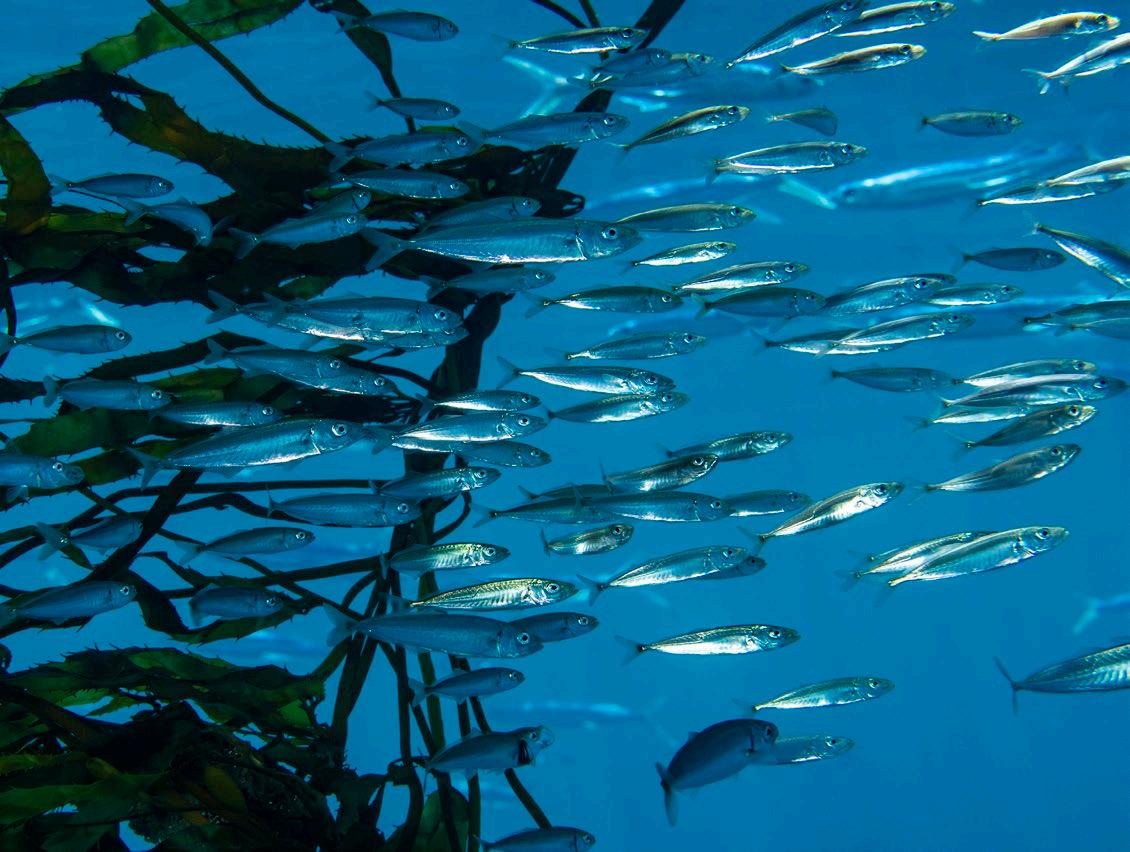
Oceana’s accomplishments wouldn’t be possible without the support of its members.
You can help Oceana fight to restore our oceans with your financial contribution. Call us today at 1.877.7.OCEANA, go to our website www.oceana.org/give and click on “give today” or use the envelope provided in this newsletter. You can also invest in the future of our oceans by remembering Oceana in your will. Please contact us to find out how. All contributions to Oceana are tax deductible. Oceana is a 501(c)(3) organization as designated by the Internal Revenue Service.
Halifax
Global headquarters: Washington, D.C. Asia: Manila Europe: Brussels | Copenhagen | Madrid | Geneva | London North America: Belmopan | Ft. Lauderdale | Juneau |
| Mexico City | Monterey | New York | Ottawa | Portland | Toronto South America: Brasilia | Santiago | Lima
Ave NW, Suite 200
20036
Go to Oceana.org and give today. 1025 Connecticut
Washington, DC
USA phone: +1.202.833.3900 toll-free: 1.877.7.OCEANA
© Oceana/Marensepia




















































